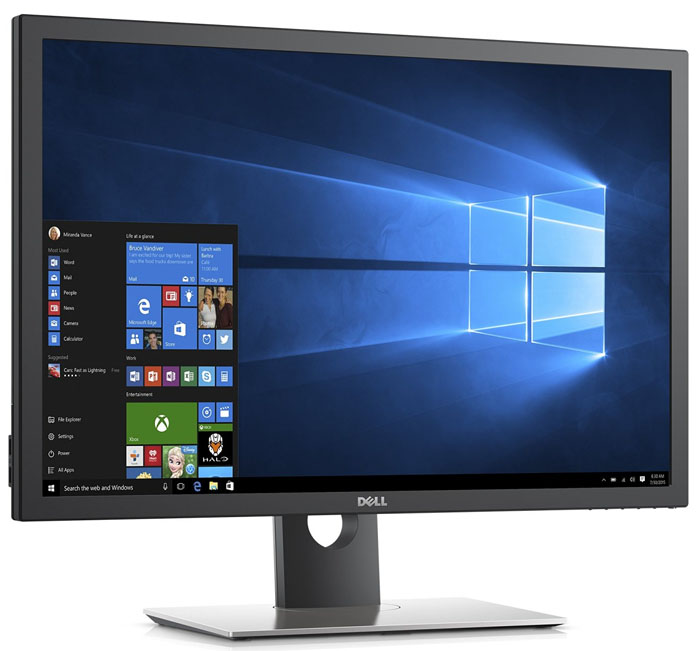Early Verdict
In the 16:10 category, there aren’t too many choices but Dell has pretty much hit a home run with the UP3017. It offers fantastic accuracy for Adobe RGB, sRGB, and DCI-P3 gamuts plus solid build quality. The addition of bundled calibration software makes it an excellent tool. To top it off, it sells for a relatively reasonable price. If you’re looking for a professional-grade display for color-critical work that offers some bonus screen height, the UP3017 is hard to beat.
Pros
- +
Near-perfect out-of-box accuracy
- +
Contrast
- +
Bright & uniform panel
- +
Build quality
- +
Bundled software
- +
Overall value
Cons
- -
Limited OSD calibration
- -
Uniformity compensation reduces contrast and output
Why you can trust Tom's Hardware
Introduction
We’ve covered quite a few professional displays, and it seems that lately, the differences between products have diminished. In fact, monitors are now accurate enough that you barely need to consider anything but screen size and resolution. The vast majority of these panels come factory calibrated and ready for work right out of the box.
Most of the differentiating factors boil down to features and adjustability. Even when a monitor doesn’t require an initial calibration, the OSD should contain picture modes that are capable of full adjustment and offer controls for white balance, color management, and gamma. Many products accomplish this with bundled software, while others give you everything necessary in the menu.
Today we’re checking out another addition to the thin ranks of the 16:10 category. We recently tested two similar panels from NEC: the EA305WMi and PA302W. The latter has everything you need for calibration via multiple methods, and tank-like build quality, but you’ll pay handsomely for it. Dell offers a less-expensive alternative in the UP3017. It’s a 30-inch IPS panel with 2560x1600 resolution and preset gamut options for Adobe RGB, sRGB and DCI-P3.
Specifications
Feature-wise the UP3017 is packed. Not only do you get preset factory calibrated picture modes for the three most commonly-used color gamuts, Dell bundles its Ultrasharp Calibration software so you can create your own picture modes with an i1 Display Pro. The OSD contains a Custom option that sports two-point white balance controls plus a color management system with hue and saturation sliders.
The panel is IPS with a white LED arrayed at the edges. Uniformity compensation is provided and programmed for each individual panel during manufacturing. The obligatory wide-gamut support is there, allowing for a DCI-P3 preset whose color points fall in between Rec.709 and Adobe RGB.
Additional features include USB 3.0 with two upstream ports that can be assigned to individual video inputs, allowing one UP3017 to serve two workstations. You can also use the provided DisplayPort output to daisy-chain a second screen to a single video card.
At 101ppi, it offers good pixel density if not quite that of a 32-inch Ultra HD screen. The extra height can be a real boon to productivity, however. It’s far easier to place two documents or two browser windows side-by-side. The 16:10 aspect was almost considered dead until the aforementioned NEC monitors appeared a few months ago. Now that Dell is getting into the act, we may perhaps see a resurgence of the format. For now, let’s go in depth with the UP3017.
Get Tom's Hardware's best news and in-depth reviews, straight to your inbox.
Packaging, Physical Layout & Accessories
The UP3017’s carton is unique. Instead of the traditional suitcase design, it opens like a clamshell to reveal packing completely devoid of Styrofoam. Instead Dell uses molded paper pulp to protect the contents along with extra space in the carton sides. It’s very lightweight and more than ready to defend against shipping damage.
Bundled cables include IEC power, mini-DisplayPort, and USB 3.0. A CD contains the user manual and the Ultrasharp Calibration app that supports X-rite’s i1 DisplayPro colorimeter. You also get a factory calibration report showing results for Adobe RGB and sRGB color gamuts.
Product 360
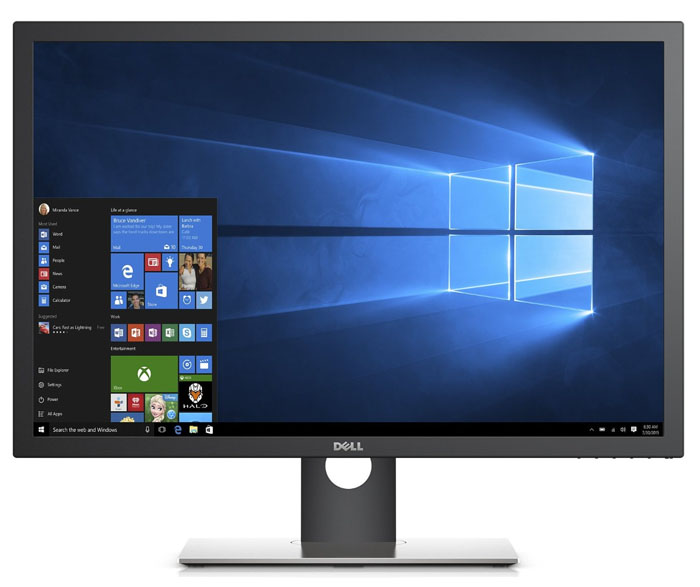
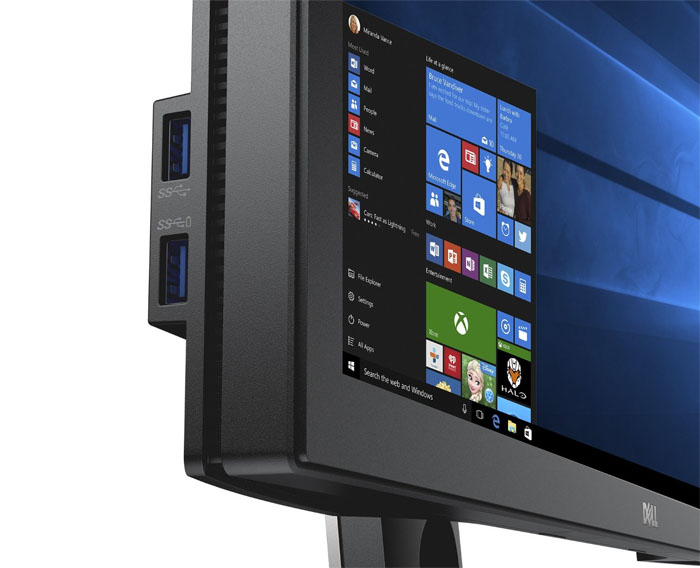
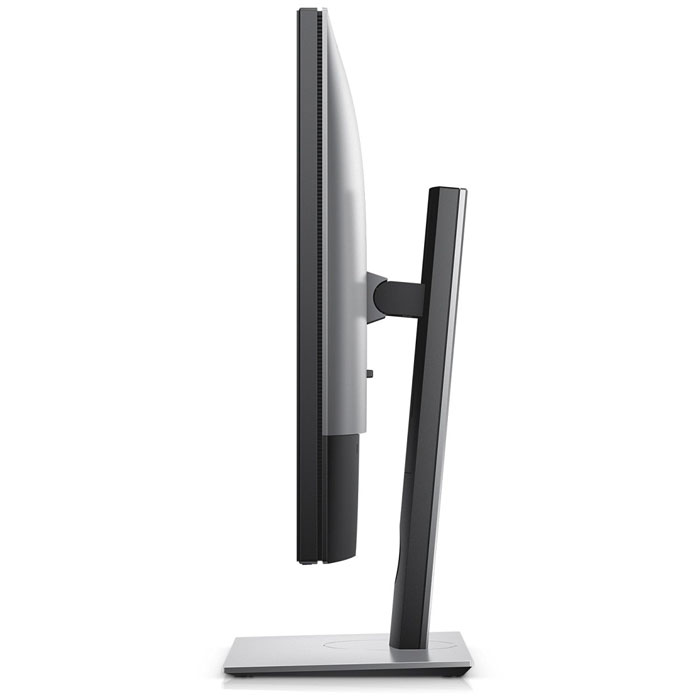
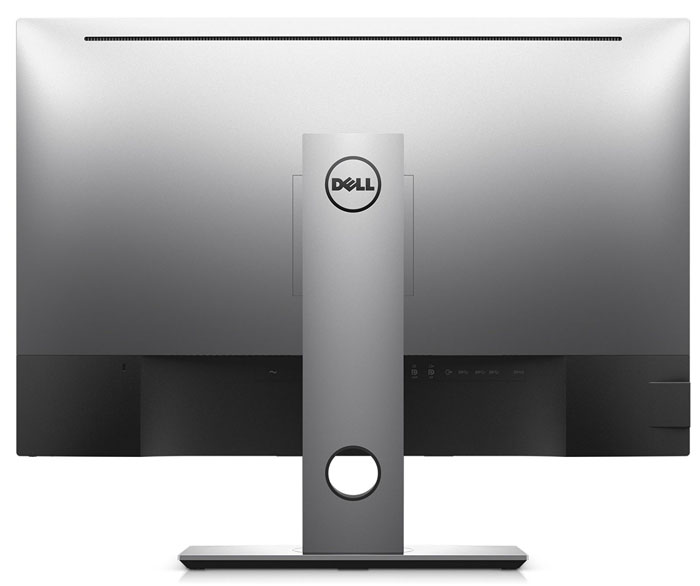
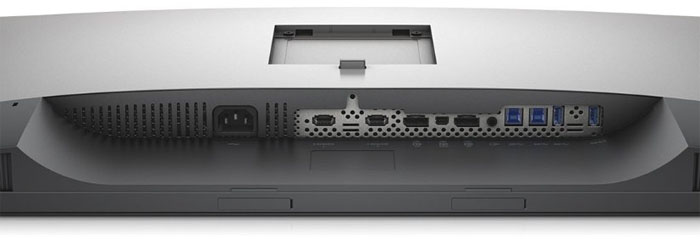
The UP3017 looks large from the front, but it’s only a tad wider than a 16:9 27-inch monitor. The base has a fairly small footprint, but its depth is sufficient to provide a solid foundation for the panel’s 20-pound weight. The anti-glare layer has the same 3H hardness rating as other Dell displays and strikes a good balance between light rejection and clarity, which is beyond reproach.
The bezel is less than an inch wide on all sides and hides tiny control buttons at the lower-right. There are no icons to indicate their location but a small power LED hangs just low enough to be visible. Styling might be called minimalist but Dell adds some lighter gray plastic panels around back and on the beefy upright to make things interesting. Said upright provides firm adjustments for tilt (-5 to +21 degrees), swivel (30 degrees), height (150mm), and portrait mode.
The two side USB ports are version 3.0 and can remain powered up when the monitor is turned off. That function is controlled in the OSD. The profile is fairly slim at around 2.5". The back tapers smoothly from side to side, and the upright can be removed to expose a 100mm VESA mount. A large hole in the stand facilitates cable tidiness.
Connection ports are clearly marked and face downward. There are two DisplayPort inputs (one mini) and one output for daisy-chaining. You also get two HDMI jacks, version 1.4. Two USB upstream ports allow connection of two computers to a single UP3017. You can then assign the downstream ports to a specific video input. Audio is supported by a single analog output (3.5mm) into which you can plug headphones or powered speakers. There is no built-in sound available but you can control which source provides the audio signal.
MORE: Best Computer MonitorsMORE:How To Choose A Monitor
MORE: Display Calibration 101
MORE: The Science Behind Tuning Your Monitor
MORE: All Monitor Content

Christian Eberle is a Contributing Editor for Tom's Hardware US. He's a veteran reviewer of A/V equipment, specializing in monitors. Christian began his obsession with tech when he built his first PC in 1991, a 286 running DOS 3.0 at a blazing 12MHz. In 2006, he undertook training from the Imaging Science Foundation in video calibration and testing and thus started a passion for precise imaging that persists to this day. He is also a professional musician with a degree from the New England Conservatory as a classical bassoonist which he used to good effect as a performer with the West Point Army Band from 1987 to 2013. He enjoys watching movies and listening to high-end audio in his custom-built home theater and can be seen riding trails near his home on a race-ready ICE VTX recumbent trike. Christian enjoys the endless summer in Florida where he lives with his wife and Chihuahua and plays with orchestras around the state.
-
leclod Hi,Reply
I've seen loads of PC monitor tests, I've never seen a TV as PC Monitor test.
In 2009, I did first see a friend using a wall mounted TV as second monitor for his laptop.
TVs being cheaper, smarter and prettier than PC monitors, I've made the step to a 42" 3D capable Philips TV a few years ago.
I've never looked back !
Now with reasonnably priced 4K and even better looks, TVs might be even more attractive. Don't you think ?
Regards,
Claude -
ohim Reply
Because mostly they look like crap for some reason close up, i have a 40" 4K TV above my monitor meaning it has 110ppi, but i prefer my IPS 34" 3440x1440 (110ppi as the tv) monitor that has way better image at close range than the TV, at 2-3m you can`t really tell them apart.18705933 said:Hi,
I've seen loads of PC monitor tests, I've never seen a TV as PC Monitor test.
In 2009, I did first see a friend using a wall mounted TV as second monitor for his laptop.
TVs being cheaper, smarter and prettier than PC monitors, I've made the step to a 42" 3D capable Philips TV a few years ago.
I've never looked back !
Now with reasonnably priced 4K and even better looks, TVs might be even more attractive. Don't you think ?
Regards,
Claude
-
zodiacfml Sure if you have a big room and wall mounting placement is not an issue.Reply
Resolution is another thing, only the popular resolutions are available for TVs which is 1080p and the 4K, nothing in between.
Next, they don't have adaptive sync.
If you ask me though, I will have to wait for any monitor with a 120 Hz and 4K interface -
Patrick_Bateman If this monitor ever goes down to 600$, then I'll for sure buy one. I understand that this is for professionals, and for them it might be worth it, but at 1249$ MSRP, this monitor isn't the best value.Reply -
ngaio Reply18706833 said:If this monitor ever goes down to 600$, then I'll for sure buy one. I understand that this is for professionals, and for them it might be worth it, but at 1249$ MSRP, this monitor isn't the best value.
Recently Dell had a 25% off sale. I'm sure it will come around again.
-
nitrium I'm rocking an old Dell 16:10 at the moment (1920x1200) and the reason I haven't "upgraded" is primarily due to it feeling like a DOWNGRADE dropping to 16:9. The extra pixels at the bottom when you're doing 16:9 video editing, especially, is pure gold. Shame this screen is relatively expensive though. Would love to see this same resolution in a 27".Reply -
bit_user ReplyMax Resolution & Refresh
Aw, man... $1k for a 30" monitor that's not even 4k? No thanks.
2560x1600 @ 60Hz
$1068.24
And where's the @#(^%&*$ OLED monitor they showed way back at CES? Last I heard, it was supposed to come out in August. Did the release get pushed back again?
Not like I was going to buy one, but I want an OLED monitor, so they'd better start coming out. -
synphul Reply18708979 said:Max Resolution & Refresh
Aw, man... $1k for a 30" monitor that's not even 4k? No thanks.
2560x1600 @ 60Hz
$1068.24
It's actually a decent price if you take a look at pcpartpicker's listings. They don't list every monitor for sure but yes, $1000 for a 30" ips panel at 16:10/2560x1600. Others from nec and hp range from $1200-2000.
There are cheaper 32" 4k monitors like the BenQ BL3201PH but it's not really a professional monitor either. The colors aren't said to be the best, it's stuck with the srgb color space (no adobe options), contrast isn't the best. If doing basic tasks or cad work it's probably fine, for those doing design which will go to print, not so much. Features cost money and could be worth it if someone needs them. If not needed then it's overkill and ends up costing more.
If all someone wants is a giant tn panel they're out there for less money. Dell's done pretty well for themselves with the ultrasharp's for the most part. -
10tacle I have long preferred 16x10 having had (and still have) a 22" 1680x1050 Samsung and a 26" 1920x1200 Samsung. That extra height was great for flight simming and sim racing having extra virtual cockpit instrument reading capability.Reply
When making the jump to 2560x1440 with a 27" Dell three years ago I was missing that extra height, but the increased resolution and screen real estate more than made up for it. Honestly I am surprised panel makers are still making this aspect ratio since the manufacturing economy of scale favors 16:9 panels both for PC monitors and obviously for TVs. Considering Dell has had 30" 2560x1600 monitors for years and the fact that they are still over $1,000 proves it. -
zthomas Lets face it this monitor is for business and not gaming.. Dell sells tons of monitors.. almost every office I have been had almost all double Dell's on each desk..Reply
